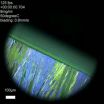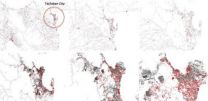(Press-News.org) The Environmental Protection Agency's (EPA's) recommendations for treating water after a natural disaster or other emergencies call for more chlorine bleach than is necessary to kill disease-causing pathogens and are often impractical to carry out, a new study has found. The authors of the report, which appears in the ACS journal Environmental Science & Technology, suggest that the agency review and revise its guidelines.
Daniele Lantagne, who was at the Centers for Disease Control and Prevention (CDC) at the time of the study and is now at Tufts University, and colleagues note that after natural disasters such as floods, clean water can be scarce. To prevent the spread of water-borne illnesses, the EPA currently recommends "bottle, boil, bleach" in case of a water emergency. That is, people should turn to bottled water as a first resort. If that's not an option, then they should boil available water to disinfect it. As a last resort, they should add "1/8 teaspoon (or 8 drops) of regular, unscented, liquid household bleach for each gallon of water." But, as the researchers point out, 1/8 of a teaspoon is not the same as 8 drops. And both amounts are higher than CDC and World Health Organization recommendations. To further evaluate the guidelines, the team tested different bleach treatment levels at six households around the country using water from various sources.
They found that the range of EPA-recommended doses (8 drops to 1/8 of a teaspoon) were higher than necessary to kill disease-causing pathogens in the samples. In a related project, they reported that even if the guideline were lowered, many people they surveyed would not be able to carry it out. None had the right kind of bleach in the house, and few had the correct measuring devices. The researchers recommend a revision of EPA guidelines and more research into more practical water treatment products.
INFORMATION:
The authors acknowledge funding from the Centers for Disease Control and Prevention.
The American Chemical Society is a nonprofit organization chartered by the U.S. Congress. With more than 161,000 members, ACS is the world's largest scientific society and a global leader in providing access to chemistry-related research through its multiple databases, peer-reviewed journals and scientific conferences. Its main offices are in Washington, D.C., and Columbus, Ohio.
To automatically receive news releases from the American Chemical Society, contact newsroom@acs.org.
Follow us: Twitter Facebook END
Researchers question emergency water treatment guidelines
2014-04-16
ELSE PRESS RELEASES FROM THIS DATE:
Relieving electric vehicle range anxiety with improved batteries
2014-04-16
RICHLAND, Wash. – Electric vehicles could travel farther and more renewable energy could be stored with lithium-sulfur batteries that use a unique powdery nanomaterial.
Researchers added the powder, a kind of nanomaterial called a metal organic framework, to the battery's cathode to capture problematic polysulfides that usually cause lithium-sulfur batteries to fail after a few charges. A paper describing the material and its performance was published online April 4 in the American Chemical Society journal Nano Letters.
"Lithium-sulfur batteries have the potential to ...
Breakthrough points to new drugs from nature
2014-04-16
Researchers at Griffith University's Eskitis Institute have developed a new technique for discovering natural compounds which could form the basis of novel therapeutic drugs.
The corresponding author, Professor Ronald Quinn AM said testing the new process on a marine sponge had delivered not only confirmation that the system is effective, but also a potential lead in the fight against Parkinson's disease.
"We have found a new screening method which allows us to identify novel molecules drawn from nature to test for biological activity," Professor Quinn said.
"As it ...
Global scientific team 'visualizes' a new crystallization process
2014-04-16
VIDEO:
This is a high speed video of the crystal ribbons forming as the solution is spread using a squeegee like technique.
Click here for more information.
Sometimes engineers invent something before they fully comprehend why it works. To understand the "why," they must often create new tools and techniques in a virtuous cycle that improves the original invention while also advancing basic scientific knowledge.
Such was the case about two years ago, when Stanford engineers ...
Researchers propose network-based evaluation tool to assess relief operations feasibility
2014-04-16
The United Nations Office for Disaster Risk Reduction reported that disasters have affected around 2.9 billion people worldwide from 2000-2012— killing more than a million, and damaging around 1.7 trillion US dollars in estimates. Moreover, natural disasters and their damages have been documented to occur with increasing intensity. Given the staggering numbers, effective disaster preparedness and relief response plans is compelling, especially considering the fact that natural disasters are usually unpredictable and damage cannot be avoided.
Implementing a speedy and ...
Medieval slave trade routes in Eastern Europe extended from Finland and the Baltic Countries to Asia
2014-04-16
The routes of slave trade in Eastern Europe in the medieval and pre-modern period extended all the way to the Caspian Sea and Central Asia. A recent study completed at the University of Eastern Finland suggests that persons captured during raids into areas which today constitute parts of Finland, the Russian Karelia and the Baltic Countries ended up being sold on these remote trade routes. There was a particular demand for blonde girls and boys who were seen as exotic luxury items, and it was financially beneficial to transport them to the far-away markets. The study by ...
Study provides new insight into how toddlers learn verbs
2014-04-16
Parents can help toddlers' language skills by showing them a variety of examples of different actions, according to new research from the University of Liverpool.
Previous research has shown that verbs pose particular difficulties to toddlers as they refer to actions rather than objects, and actions are often different each time a child sees them.
To find out more about this area of child language, University psychologists asked a group of toddlers to watch one of two short videos. They then examined whether watching a cartoon star repeat the same action, compared ...
Potential use of Google Glass in surgical settings
2014-04-16
Oxford, UK, April 15, 2014 – An article recently published in the International Journal of Surgery shows the potential applications for Google Glass in the surgical setting, particularly in relation to training.
Personal portable information technology is advancing at a breathtaking speed. Google has recently introduced Glass, a device that is worn like conventional glasses, but that combines a computerized central processing unit, touchpad, display screen, high-definition camera, microphone, bone-conduction transducer, and wireless connectivity.
The authors of the ...
Multiple births don't have to be an inevitable result of fertility treatments
2014-04-16
While fertility treatments have helped many people become parents, they commonly result in multiple births, increasing the risk of prematurity, and leading to lifelong complications. But this doesn't have to be the case, according to Yale School of Medicine researchers and their colleagues, who recommend sweeping changes to policy and clinical practice in a study published in the April issue of Fertility & Sterility.
Pasquale Patrizio, M.D., professor in the Department of Obstetrics, Gynecology & Reproductive Sciences at Yale School of Medicine, and his colleagues at ...
Ant colonies help evacuees in disaster zones
2014-04-16
An escape route mapping system based on the behavior of ant colonies could give evacuees a better chance of reaching safe harbor after a natural disaster or terrorist attack by building a map of showing the shortest routes to shelters and providing regular updates of current situations such as fires, blocked roads or other damage via the smart phones of emergency workers and those caught up in the disaster.
Koichi Asakura of Daido University in Nagoya and Toyohide Watanabe of the Nagoya Industrial Science Research Institute in Japan have carried out successful simulations ...
New Geosphere series: The St. Elias Erosion/Tectonics Project in Southern Alaska
2014-04-16
Boulder, Colo., USA – GEOSPHERE has added a new themed issue to its roster: "Neogene tectonics and climate-tectonic interactions in the southern Alaskan orogeny." Interest in Alaskan tectonics has varied over time, propelled mostly by geologic hazards. In 1964, the great Alaskan earthquake focused attention on Alaska and was a major factor in the establishment of the concept of subduction in the early days of plate tectonics.
In the 1980s, the northern Cordillera, including Alaska, was the subject of extensive study using the terrane analysis approach, which spawned ...


